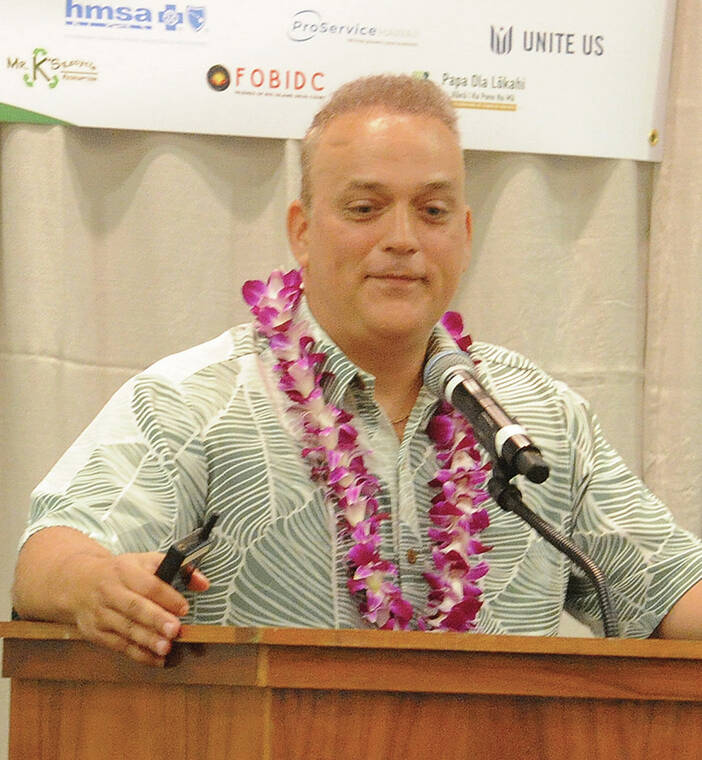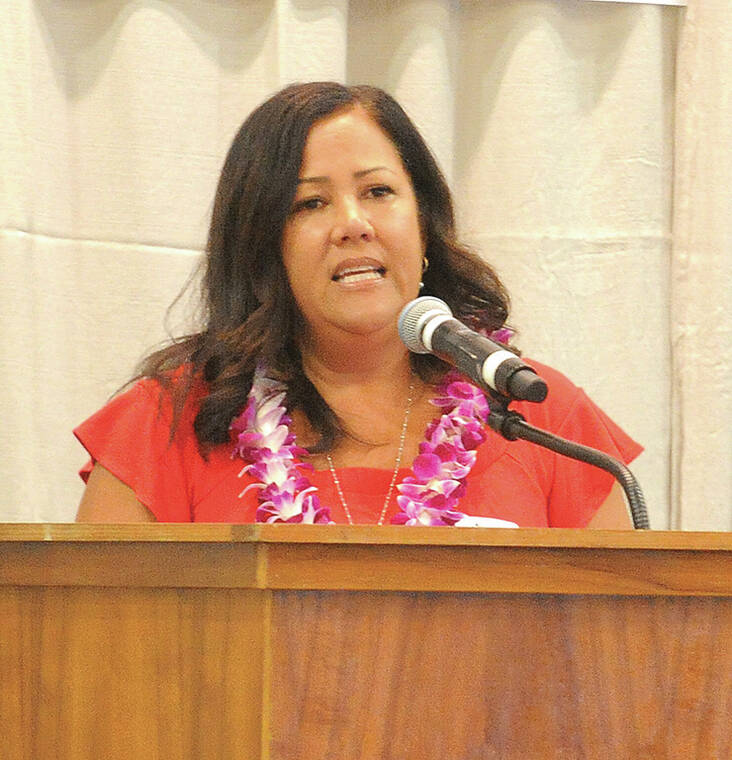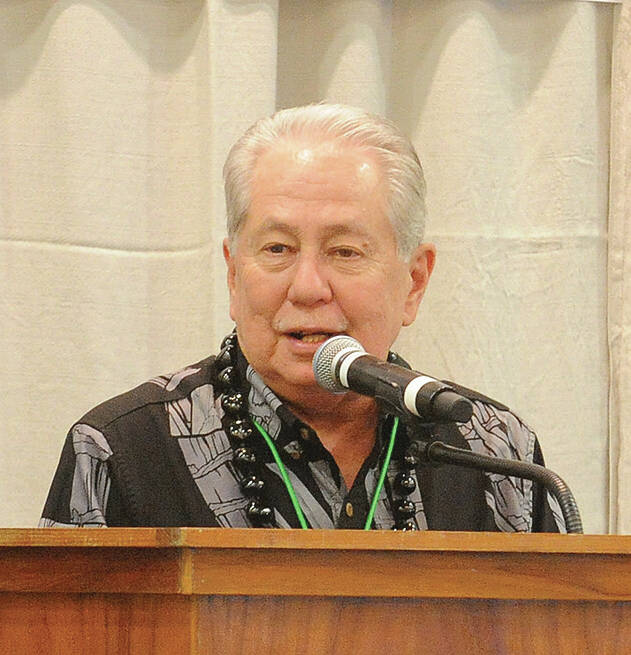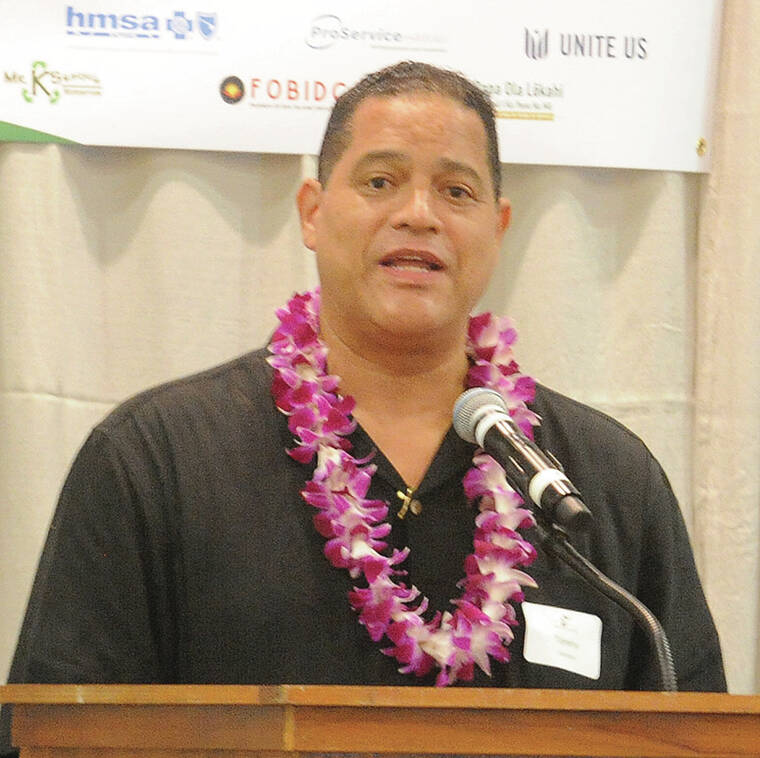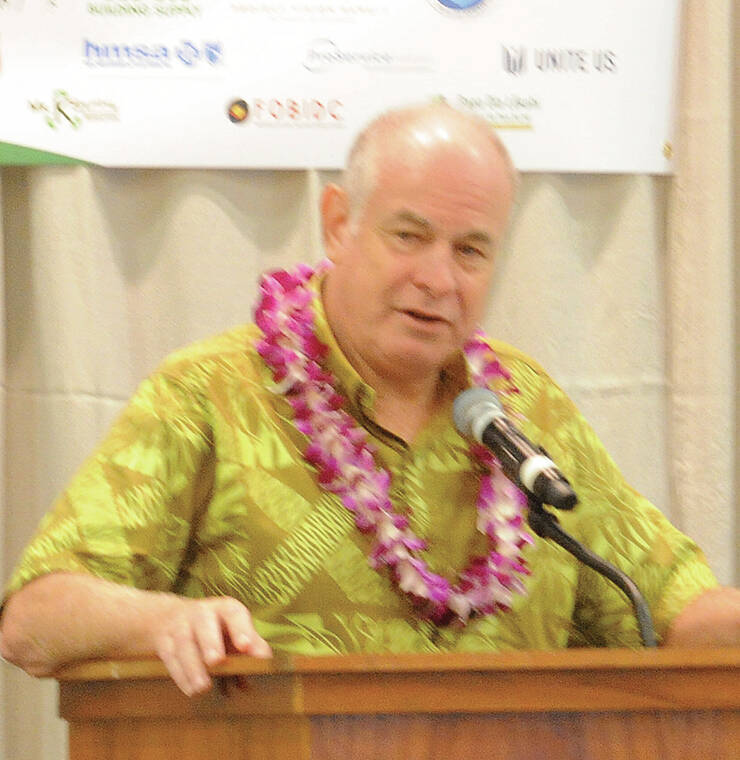‘Going Home’ summit emphasizes ways teh community can help transition inmates back into society
The theme of community was echoed by speakers Wednesday at Going Home Hawaii’s Reentry and Restoration Summit at King Kamehameha’s Kona Beach Hotel.
The theme of community was echoed by speakers Wednesday at Going Home Hawaii’s Reentry and Restoration Summit at King Kamehameha’s Kona Beach Hotel.
300 participants from government, private and nonprofit organizations gathered to discuss innovative ways to transition inmates through wraparound services to reduce the rates of recidivism.
Event organizer and Going Home Hawaii President and CEO Les Estrella said everyone was at the summit, coming together for one purpose, centered around the community being healthy and safe.
“Being here together is working collectively and collaboratively with all of our partners. This summit is not a starting point but rather a continuation of the work we have been doing over the years,” he said. “Normally government would do something like this, but since nobody else is doing it, we needed to. It was the right thing to do. Because of our longstanding partnerships, we were able to bring together all of these awesome people to make safer communities, but much more needs to be done.”
“Being in this room is a wow moment,” said Mayor Mitch Roth.
Roth recounted his days as lead prosecutor for the county and being the first in the nation to implement restorative justice, an approach to justice that aims to get offenders to take responsibility for their actions, to understand the harm they have caused, to give them an opportunity to redeem themselves, and to discourage them from causing further harm.
“We did things different here than the rest of the world,” he said. “I think about some of the people I actually prosecuted, and they are my heroes. Failure is a point in time, not a definition of who you are. Love strong is why we are here today. What you are doing is God’s work.”
Tommy Johnson, Director of Public Safety said the Department of Public Safety is transitioning the name of the department to the Department of Corrections and Rehabilitation effective January 2024.
“This is an ideal time for this change to occur for us to embrace the paradigm shift needed to affect positive change in the criminal justice system,” said Johnson.
He said he wanted to change the punitive system into a model treatment program oriented approach.
“Our vision is to promote community safety while focusing on rehabilitation and ensure a successful reintegration back into the community,” he said, acknowledging the challenges of overcrowding in facilities and funding.
Johnson said the system is old and antiquated and the facilities are not designed for the population or for rehabilitation.
“I hope to modernize and upgrade our existing system integrating best practices and successful models from other jurisdictions while ensuring we also maintain respect for the culture.”
He said he wants to partner with community organizations to break the cycle of generational incarceration.
“We need as many jail diversion programs as possible to stop people from coming to jail and provide the services they need,” he said.
Johnson noted it was cheaper to provide those services in the community, where the daily cost for a parolee is $9 versus $258 for incarcerated individuals.
“We should not be incarcerating people who don’t need to be incarcerated. Jail is the most expensive least effective option,” he said.
He said the corrections division provides services that will enable persons released from custody to function as contributing, law abiding members of the community.
“I would like to see these offenders strive and excel in the community to become leaders and role models and to earn not just minimum wage, but a living wage so they can take care of their families and become contributing members of society,” he said. “The needs of the offender today are not the same as they were 20 or 30 years ago, so we need to look at all of our policies and procedures, look at our curriculum to make sure we are meeting the needs of the offender today.”
Jamee Miller, president of Ekolu Mea Nui stresses connecting to place is essential for healing. She said Native Hawaiians are disproportionately represented in the system.
“It is love of aina and place of grounding that can bring much healing and restoration to all of us in the times of our need,” she said. “When you scan the world, especially colonized countries, you find that we here in Hawaii are not unique. Indigenous people are disproportionately represented in these types of systems like incarceration.”
She said historical trauma is at the root of societal troubles, inequities and negative outcomes including incarceration and that most trauma is connected to loss of ancestral lands, loss of a political standing, loss of a culture, including language, which lead to a loss of practices that kept the Hawaiian society intact.
“We no longer have that. It is not that system anymore. The system is people. It is us. We want a change in the system. We have to be that change,” she said. “This current system that we are in is not broken, it is how it was designed to be and it is not working anymore. The answer to healing is within us and within our culture. Hawaii can heal. The vision is to transform our justice system to Native Hawaiian cultural practices and values.”
She said native practitioners need to be brought to the table and innovate alternatives to incarceration including changing laws and policies need to be made. Also, Miller suggested language needs to change with new terms needed for the negative connotations of the words inmate, offender and incarcerated, which carry stigma.
Kimo Alameda PhD stressed healthcare is paramount to reintegration and mental health is everywhere.
“It can be in the church, the community, in the family, it can be everywhere, but in our country it is in our wallet, only for those that can afford it,” he said.
He said 5,600 Hawaii residents are currently in custody with 48% Native Hawaiian. After release, 50% go back in within one year and 75% within five years.
To reduce recidivism, Alameda suggests employment is key.
“They did their time. Everybody deserves a second chance and we should make that second chance awesome. Good employment equals good health,” he said adding that mental health and substance abuse are the top two crisis in the country. “One of my recommendations is to look into a 24/7 drop in center. At least that is a start and something we can look at.”
The other theme discussed at the summit is the need for housing for those reintegrating into society. Ian Costello of the Corporation for Supportive housing presented that government agencies have made a commitment to come together to share resources and provide equity and find solutions.
“Equity means investment. It means money. We need funding,” he said. “One of the national needs assessment we put together in Hawaii we need 4,000 supportive housing as of 2018.”
He said nationwide people of color are over-represented in the justice system and in homelessness and the cycles are perpetuated.
“There is a recognition that people cycle through a system of care – health, justice or homelessness. It’s a perpetuation of resources,” he said. “Someone is not getting what they need at a particular point in time. We need to connect people to resources.”
He said supportive housing with wraparound services tailored around the person they serve is the solution, along with collaboration and change.
“It is a community effort to let people thrive,” he said. “It is an economic and moral imperative to do something.”


